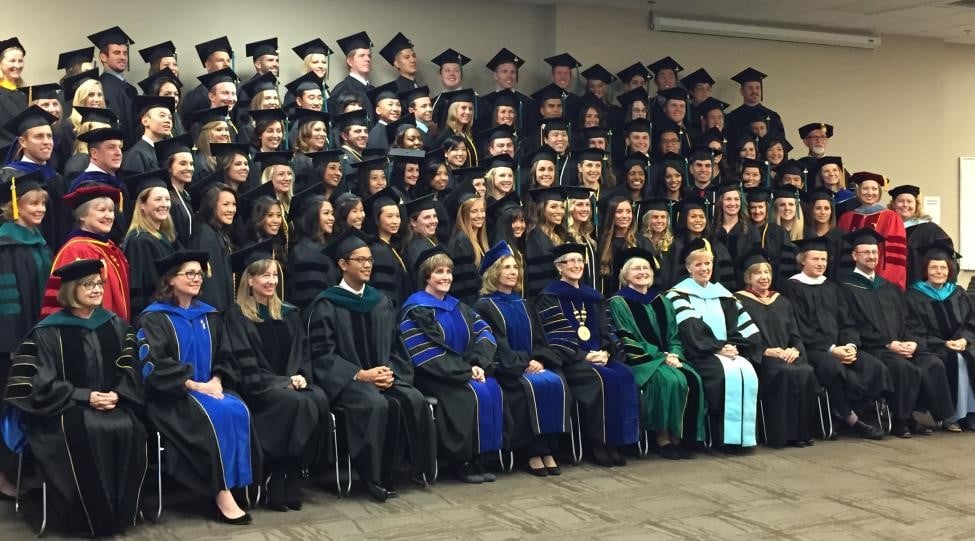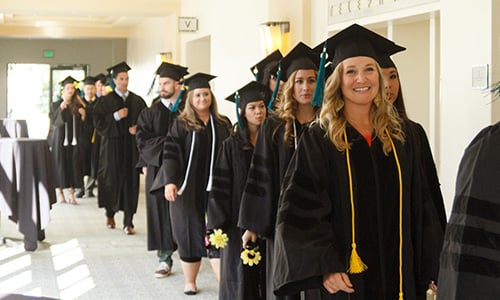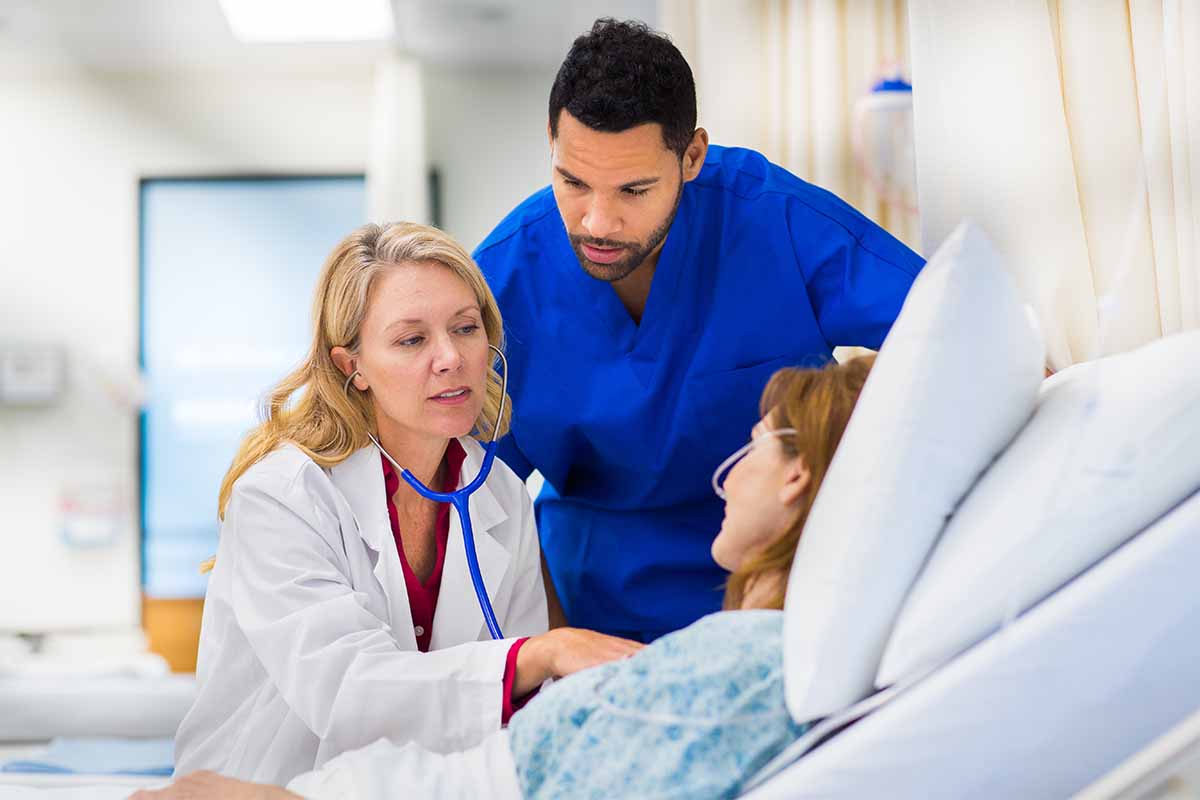
USAHS’ five campus libraries offer the kinds of resources one would expect to find in a university library: physical and digital access to books, journals, and online databases. But they are also home to some unusual materials. “Our physical resources are what’s most unique about the Library,” says Julie Evener, MLIS, EdD, Director of Library Services. “But what’s most impactful is our staff and the support they offer students.”
Unique Resources


Julie Evener, MLIS, EdD, Director of Library Services
For starters, bone models of skeletons, spines, brains, and other anatomical structures are available for ten-day checkout. Students can also borrow medical equipment, such as goniometers, Kaltenborn wedges, stethoscopes, and blood pressure cuffs.
“Resources like these are rarely found in libraries—and it’s especially unusual that they are allowed to circulate,” Dr. Evener says. “Students take advantage of them to learn anatomy, practice therapy techniques, and study for exams.”
Students can check out portable therapy tables for use on campus or at home, and they can experiment with using assistive devices, such as canes, crutches, walkers, and wheelchairs on campus or at home. Campus libraries also have complex muscle models for use within the library.
Accessing the Library
- Go to https://library.usa.edu/. Or click the library link in the upper-left corner of any page on usa.edu.
- The on-campus libraries are typically open from 7 a.m. to 10 p.m. seven days a week.
- Chat with a librarian here, or schedule an appointment by emailing [email protected].
Each library is built to harmonize with the architecture and design of its campus. All five libraries feature spaces for group study, while some are outfitted with carrels or rooms for individual study. While each book collection is different, staff can ship circulating books between campuses and to distance learners. During the early days of the pandemic, when the library spaces were closed, staff got creative by delivering physical resources to the students through curbside checkouts and booths set up outside the doors.
Beyond our physical resources, our extensive online databases, journals, eBooks, and streaming videos comprise the rest of the Library’s collection.


Support for Students—and Faculty
Each campus library is staffed by a professional librarian with a master’s degree in library science, and most locations also have a circulation manager. Two at-large librarians are dedicated to helping distance learning students. “I can’t say enough good things about the Library team,” Dr. Evener says. “They have such great rapport with students. They’re real innovators—anything that would help students and faculty, they’re on board.”
“When students need to find the most current publications for evidence-based practice, our Library staff can teach them where to search and how to narrow their focus and keywords so they don’t get a ton of unusable results,” Dr. Evener says.
“It’s not just about completing a class assignment—it’s also about developing information literacy and a passion for lifelong learning. And it’s about keeping up with new ways of treating patients when they go forward in their career.”
The Library’s discovery service, Search USA, is a meta-search tool that searches many resources at once but is less precise. Dr. Evener recommends that students begin there, then search key databases individually using those databases’ specialized tools. For example, PubMed, the preeminent medical and health sciences database, provides filters for very specific types of publications, such as randomized controlled studies versus systematic reviews.
Faculty members also access the Library, typically to research new teaching methodologies. Some also reach out to librarians for expert support with their clinical research projects—especially the literature search component, which staff are happy to assist with.
Events and Resources
The Library hosts frequent on subjects such as identifying keywords, using our e-book collection, diversity and equity in information searching, and setting intentions for graduate study—even mindfulness for stress reduction. Library staff also manage our Scholarship and Open Access Repository (SOAR@USA), which houses the scholarly output of USAHS faculty and students.
In a partnership with USAHS’ Writing Center, Library staff created the Scholarly Skills Community on Blackboard, launched in Summer 2021. The Community is a set of more than 20 instructional modules composed of videos, interactive learning content, and quizzes. Topics include conducting a literature search, evaluating resources, formatting, citing references, writing in an academic style, and publishing in journals. The Community has been a big success—just two months after its launch, 22% of students and faculty had accessed it.
The Library’s website is home to these resources and more, and it serves as the portal to our online collection of databases, eBooks, and journals.
Coming Innovations
iLEARN is a new University initiative, coming in 2022, that will consist of on-campus and live virtual events to help students connect to academic support services. Academic advisors and faculty will offer tips and tricks for succeeding in specific courses; student success advisors will speak to reducing test anxiety and practicing self-care; presenters will give an introduction to Blackboard Learn Ultra (the new Blackboard platform, to which the University is transitioning).
Also in 2022, the USAHS Library team plans to develop makerspaces on all campuses, in which students will have the opportunity to use emerging technologies outside of class. Plans include equipping each library with a 3D printer that occupational therapy, physical therapy, and speech-language pathology students can use for creating adaptive tools and other objects. Each library is also slated to have two Oculus Quest virtual reality (VR) headsets available for learning anatomy, practicing mindfulness, and experiencing rehabilitation-focused VR modules.
“The library is important for students because it’s filled with resources that will help them be more successful in their courses and in their career,” Dr. Evener says. “If they learn how to find the evidence they need here, that sets them up to be successful clinicians in the long term.”








